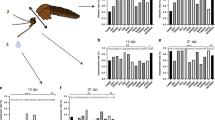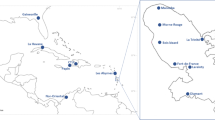Abstract
URBAN outbreaks of yellow fever are brought to an end either by the eradication of the mosquito vector, Aëdes (Stegomyia) aegypti, or by the immunization of a high percentage of the human population. Rural outbreaks are less easily controlled, for in yellow fever areas both in Africa and South America 20–25 per cent of wild monkeys are found to possess immune bodies to yellow fever; in South America, in addition, the so-called jungle yellow fever is transmitted by non-domestic forest-living mosquitoes. Although mosquitoes once capable of transmitting yellow fever by bite appear to remain infective, their life span is short and they are unable to transfer the virus to other mosquitoes either by contact or hereditarily through the egg. If the mosquito-man and mosquito-monkey cycle of transmission represents the complete epidemiological picture of yellow fever, it is not easy to account for the persistence of infection in rural areas during dry seasons when adult mosquitoes are either absent or are present only in very small numbers. It has therefore been suggested that other arthropods may possibly harbour the yellow fever virus, such arthropod vectors either having a longer life than ædine mosquitoes or being able to transmit the virus hereditarily. So far, no biting arthropods other than mosquitoes have been found of importance in the epidemiology of yellow fever.
This is a preview of subscription content, access via your institution
Access options
Subscribe to this journal
Receive 51 print issues and online access
$199.00 per year
only $3.90 per issue
Buy this article
- Purchase on SpringerLink
- Instant access to full article PDF
Prices may be subject to local taxes which are calculated during checkout
Similar content being viewed by others
Author information
Authors and Affiliations
Rights and permissions
About this article
Cite this article
FINDLAY, G., MACCALLUM, F. Epidemiology of Yellow Fever. Nature 143, 289 (1939). https://doi.org/10.1038/143289a0
Issue date:
DOI: https://doi.org/10.1038/143289a0



